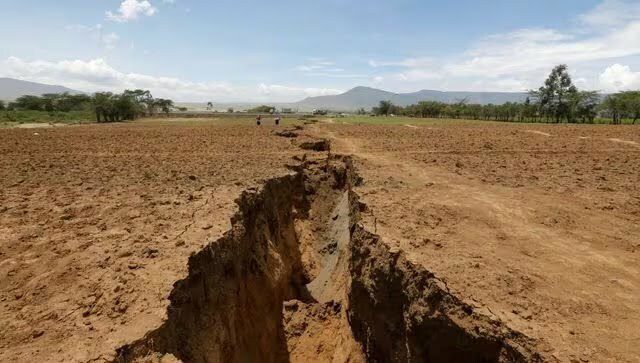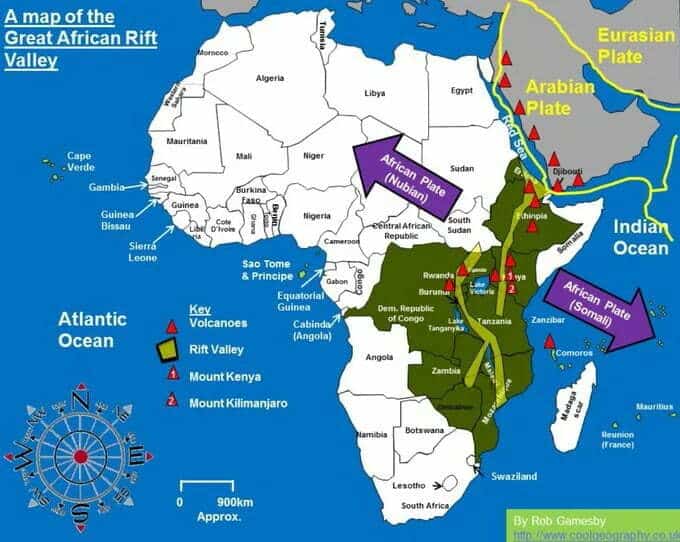If I put it harshly it sounds almost scary: Africa is literally splitting in two! Yet, you know, there is nothing strange: these things happen cyclically. The news is that we are witnessing this "birth" with our own eyes. New photos show how deep the rift is on the East African Fault and between the lands that are separating to form a new ocean.
Africa is splitting
In recent years, two pieces of land in Kenya have begun to separate, creating a divide so large that it could one day house an entire ocean. If separation continues, countries like Zambia and Uganda could one day boast a coastline of their own. Scientific research confirms the "empirical" observation: in millions of years a new ocean will form on the East African fault. The study just published in the journal Geophysical Research Letters reveals the exact origin of the crack, where the boundaries of three tectonic plates are located that are gradually moving away from each other.

African fault, how clattering
The East African Fault, which extends about 8 kilometers (35 miles), first appeared in 2005 in the Ethiopian desert. Christopher Moore, PhD student at the University of Leeds, does not hide his amazement: “This is it the only place on Earth,” he says, “where you can study how a continental fault becomes an oceanic fault.” Moore, one of the authors of the study, used satellite radar technology to monitor volcanic activity in the East African region.
The rift is located at the boundaries of the African, Arabian and Somali tectonic plates. The Arabian plate has been moving away from the African continent, slowly but inexorably, for 30 million years. The separation occurs at a rate of about 2,5 centimeters (one inch) per year: the African and Somali plates are separating even more slowly (about half a centimeter per year).
The future ocean

Scientists estimate that the rift will continue to widen, leading to the formation of a separate continent for East Africa. As GPS records accumulate, year after year, the simulation models will become more and more accurate and we will know how long it will take . In any case, eventually the Gulf of Aden and the Red Sea will flood the Afar region and the East African Fault, creating a new ocean. Beach holidays in Zambia and Uganda, or whatever they're called. If they ever exist future atlases, one day in the historical section they will bring back today's map.
To them, dear posterity, I say: remember, it all started from a small crack in the Ethiopian desert, and that day we were there :)


